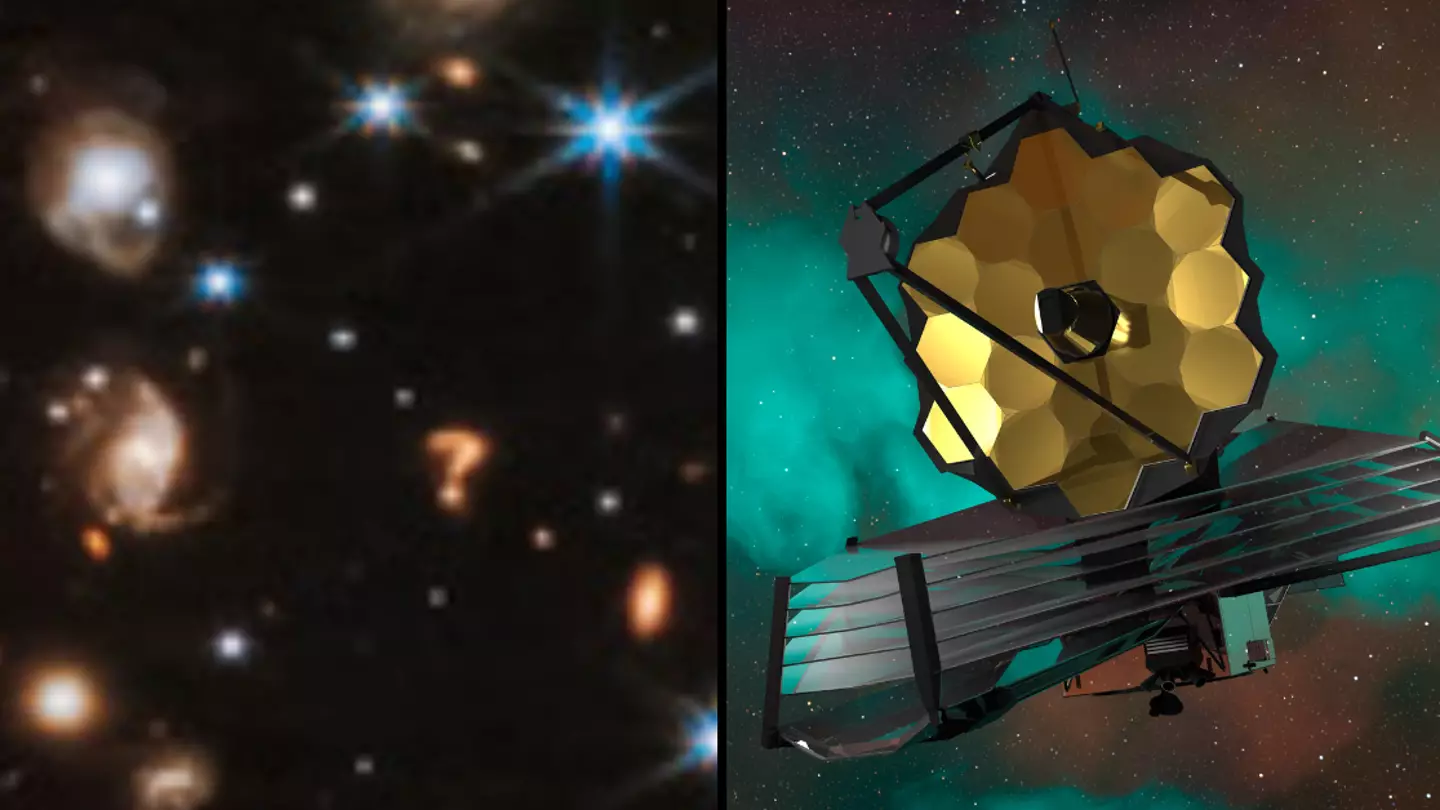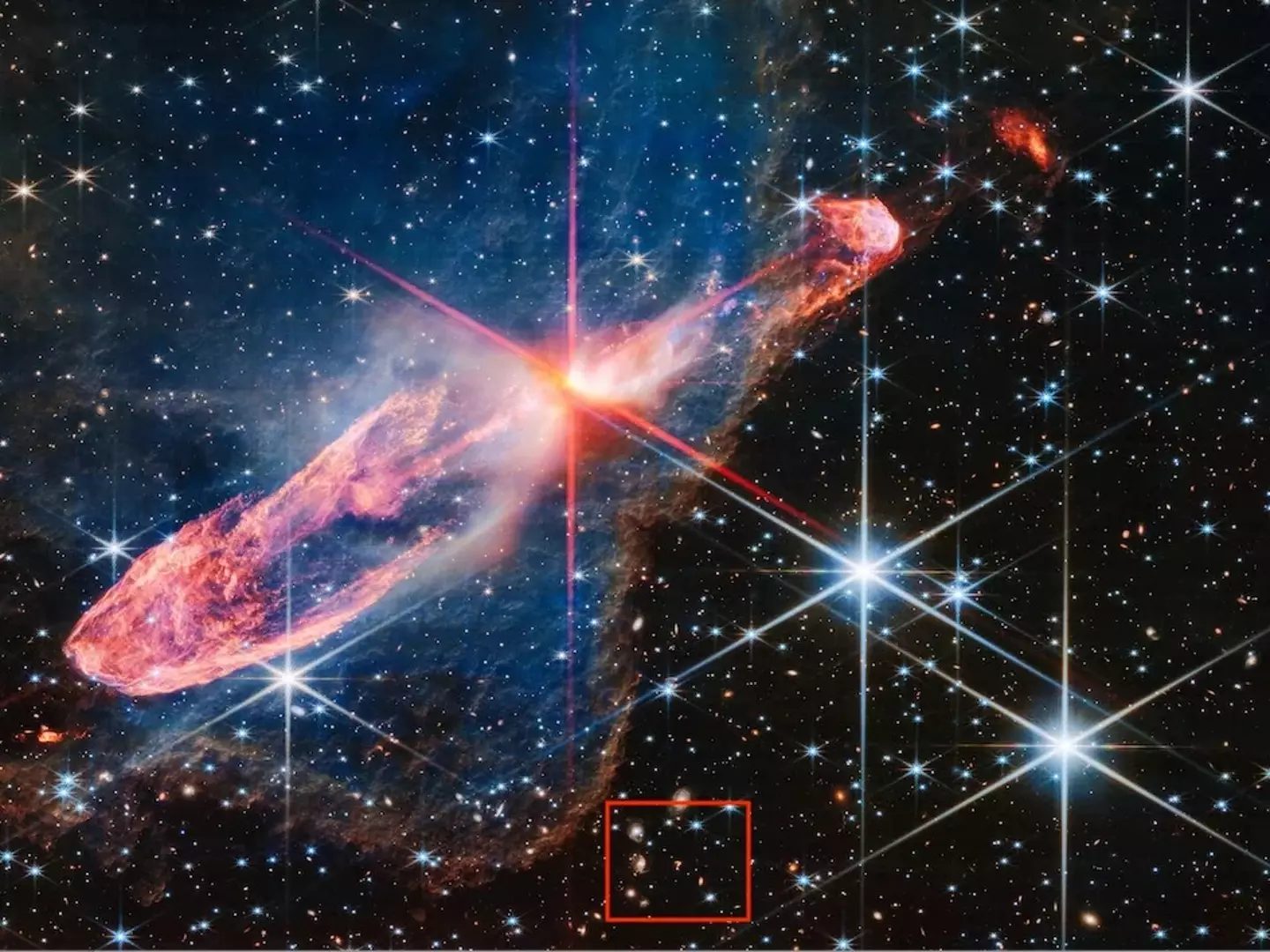
Looking out into space at the bright lights of stars and planets floating through the cosmos millions of light years away is a wonder we get the pleasure of experiencing every single night.
And thanks to the $10 billion (£7.88 billion) James Webb Space Telescope, we get to see so much more than our eyes can naturally pick up - including a question mark in outer-space (yes, really).
Webb has spent the last two and a bit years floating through space, sending back images of what it has been able to find in deep space through its high tech Near-InfraRed Camera (NIRCam).
Advert
Discoveries range from a 'Cigar Galaxy' some 12 million light years from Earth to finding light on an Earth-like planet.
It's also helped in the realm of black hole exploration, finding amazing discoveries that scientists 'thought were impossible'.
And now answers have been given to the discovery of a rather peculiar looking finding in one Webb image focusing on something completely different.
The image was released by the European Space Agency (ESA) looking at two young stars as they formed some 1,470 light years from Earth.

But in the bottom of the image is a tiny orange marking that looks very much like a rotated question mark.
Advert
The tiny image is, of course, not actually tiny in real life and instead pretty gigantic.
What it is is not known for certain at this stage, and may never actually be known unless studied further.
But expert scientists have given their opinion on the discovery.
representatives of the Space Telescope Science Institute (STScI) in Baltimore, which runs Webb's scientific operations, told Space.com: "It is probably a distant galaxy, or potentially interacting galaxies (their interactions may have caused the distorted question mark-shape).

"This may be the first time we've seen this particular object.
Advert
"Additional follow-up would be required to figure out what it is with any certainty. Webb is showing us many new, distant galaxies - so there's a lot of new science to be done."
And Kai Noeske, ESA communication program officer, told NPR it 'looks like a group or a chance alignment of two or three galaxies'.
Noeske added: "The upper part of the question mark looks like a distorted spiral galaxy, maybe merging with a second galaxy."

The question mark was captured while observing the pair of young stars dubbed Herbig-Haro 46/47.
Advert
Cosmic beauties, they are surrounded by massive discs of dust and gas with the entity only a few thousand years old itself.
As for the question mark shape itself, it may well look like that due to the two dimensional image that's been presented by Webb from its specific viewpoint.
Featured Image Credit: NASA, ESA, CSA, Joseph DePasquale (STScI) / Getty Stock ImageTopics: NASA, Science, Space, Technology, US News, World News, James Webb Space Telescope